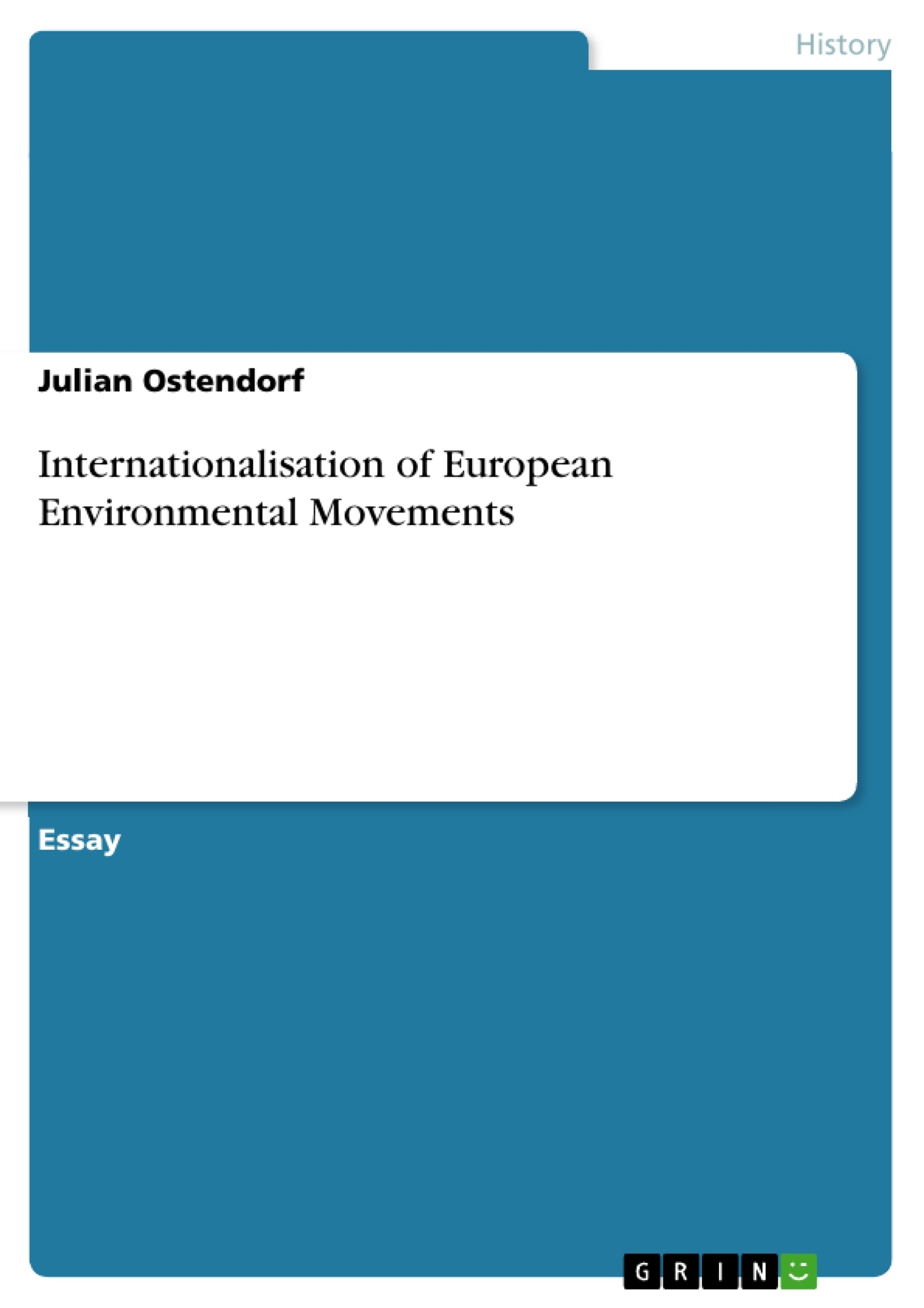Das Essay untersucht die Transformierung von Umweltprotest westeuropäischer Länder seit den 1990er Jahren. Dabei wird die Entwicklung der Umweltpolitik in den Blick genommen, die sich auf EU-Ebene und internationale Ebene wie der WTO zunehmend verlagert. Dabei wird der Fragestellung nachgegangen, ob sich aufgrund dieser Herausforderung für nationale Umweltbewegungen, einen "neue", transnationale Umweltbewegung herausbildet, die gemeinsame Ziele verfolgt und auf den gleichen Normen beruht. Dazu werden Lobbystrategien, konlifktives Protestverhalten sowie offiziele Dokumente der entpsprechenden Umweltbewegungen und - Organisationen untersucht.
Inhaltsverzeichnis (Table of Contents)
- Introduction
- Ambiguity of environmental protest in Europe
- The nature of professional network alliances
Zielsetzung und Themenschwerpunkte (Objectives and Key Themes)
This essay examines the development of environmental protest in Western Europe since the 1960s and analyzes the factors contributing to the formation of a "European Environmental Movement". It aims to determine whether the increasing presence of transnational activism has led to a unified and homogenous European environmental movement.
- The nature of environmental protest and its organizational patterns
- Cross-national cooperation and shared goals among environmental groups
- Environmental activism on the EU-level and its impact on transnational organizations
- The role of international governmental institutions, such as the WTO, in shaping the European environmental movement
- The influence of "global social movements" like the "Anti-globalisation movement" on the identity of the European environmental movement
Zusammenfassung der Kapitel (Chapter Summaries)
The introduction outlines the essay's research question, which explores whether the increasing presence of transnational environmental activism has contributed to a unified "European Environmental Movement." The essay argues that despite the existence of transnational activism, a shared movement identity remains elusive due to the fragmented and single-issue-oriented nature of environmental protest. It sets out a four-part structure for examining the question, analyzing the nature of environmental protest, cross-national cooperation, environmental activism on the EU level, and the role of international governmental institutions.
The first chapter, "Ambiguity of Environmental Protest in Europe," examines the internal dynamics of environmental protest in Western Europe. It highlights the fragmentation of national environmental movements, the emergence of professionalized organizations like Greenpeace, and the rise of new radical groups engaging in direct confrontational action. It explores the complexities of these movements and their diverse approaches to environmental issues, highlighting the lack of a unified approach across different groups.
The second chapter, "The Nature of Professional Network Alliances," analyzes the emergence of transnational cooperation among national environmental groups. It examines specific examples of cooperation driven by shared interests, such as border-crossing environmental issues, and the role of networks in coordinating broader environmental initiatives. It concludes by highlighting the increasing importance of transnational activism for influencing environmental policies at both national and international levels.
Schlüsselwörter (Keywords)
This essay focuses on the politics of protest, social movements in Western Europe, environmental activism, transnational cooperation, European Environmental Movement, fragmentation, single-issue orientation, and the role of international organizations. The essay explores the complexities of environmental protest in the context of supranational governance, examining the factors that have contributed to the formation or lack thereof of a unified European environmental movement.
- Citar trabajo
- Julian Ostendorf (Autor), 2011, Internationalisation of European Environmental Movements, Múnich, GRIN Verlag, https://www.grin.com/document/174412



